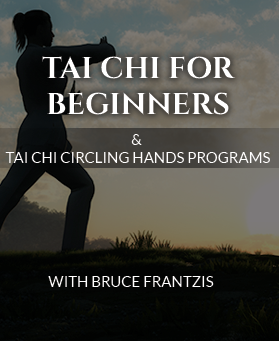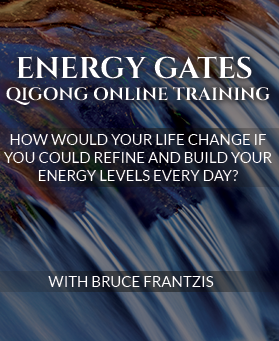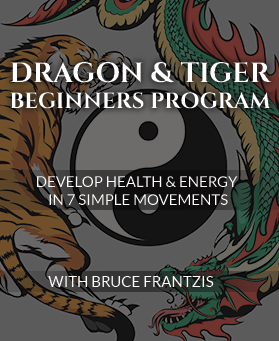By Lee Burkins
I have had the good fortune of practicing a discipline of martial art continuously since 1962 beginning with wrestling, then karate. In 1974 I began Kung Fu and “chi” (energy) practices and in 1977 I started the study of Tai Ji. Since then, I have with almost religious fever practiced and applied Yang and Chen fighting Tai Ji. I have toiled in several different systems and schools of Ba Gua since 1983 and later studied and practiced Hsing Yi like a “man on fire” during a very concentrated period of eighteen months.
Fortunately, throughout all of this intense training, the practice of Taoist Water methods have steadily calmed my heart, quieted my soul and moved me closer to the stillness of Spirit. What I am getting at here is the fact I have been “moving with intention” scores of different ways for a considerable time and this detail has raised a specific question asked of me by many people: Which of the arts is my favorite practice? My answer has always been: I like to move. But if I must sincerely answer, the art that stimulates, enthralls and discovers me most is the Ba Gua. I like to move…
So what follows here is a simple exposition on the possibilities of a number of movements within the complex, mysterious beauty of the Ba Gua. First and foremost it must be understood that a person need not be a fighter to discover the depths of the Ba Gua within themselves. For the art of Ba Gua lies hidden within each and every human being waiting to be divined. Through proper instruction and dedicated practice we can move into the mystic. Let us move our vessel.
The most predominate vessel found in the universe is that of a sphere; spheres of gravity, spheres of fire, spheres of gases, spheres of water, spheres cold and solid, spheres of radiation and spheres of seemingly empty space. Think of a sphere as a contained volume of “something” where every part of its vessel is equally distant from a point within called its center. For the purpose of this explanation, visualize the vessel as an air filled, thin-walled, pliable rubber ball the size of your head. How many different ways, in space, from a beginning point (A) to an end point (B), can this transformable ball move?
Beginning with the simplest example is translational movement. The ball moves in a straight line, from point A to point B, at a constant speed while its surface remains stationary.
The second example is rotational movement. The ball moves in a straight line, while its surface rotates around its center. This is like the ball “rolling” along its equatorial line from point A to point B at a constant speed.
Continuing, we come to the example that begins to reveal an attribute of Ba Gua motion: pulsation. Visualize our ball expanding and shrinking in size, while at the same time rotating steadily along its equatorial line as it moves at a constant speed from point A to point B.
Let’s get a little fancier. Imagine this ball of ours creating a singular long wave reaching from the top (North Pole) to the bottom (South Pole). This wave flows in a constant motion around the ball’s surface while the ball pulsates and rotates steadily along its equatorial line at a constant speed traveling from point A to point B.
And if this isn’t enough to make a Buddha dizzy, this ball of ours with a single wave motion flowing around on its surface while it pulsates and rotates, let’s give it some wobble and have its speed accelerate and decelerate while it travels from point A to point B. For more excitement, add multiple waves flowing around on its surface that change their speed and directions!
Now the essence of Ba Gua and the real fun begins: Spirals. To help us get a picture of this we’ll stop all the movement and just concentrate on the pulsation of our ball (sphere) expanding and shrinking its uniform shape.
Think of this ball as having a north pole and South Pole and a center located on a straight line between them inside the ball. As the ball expands or shrinks, the North and South Poles move in a linear manner away from and towards the center of the ball. Now consider the North and South Pole points spiraling as they “fall in” towards the center of the ball. Next imagine the poles spiraling as they move outward and away from the center of the ball. Here I have to mention the fact that there are an infinite number of points on the surface of a sphere (our ball)! Every one of them has the potential to spiral in towards and away from the ball’s center. At different times!
So our rotating, wave covered, speed changing, wobbling, pulsating ball, infused with a mosaic of expanding and shrinking spirals moves through a grid of moving space. Just like the observable universe around us. Welcome to circle walking! Sound complex? Yes it does but it’s nothing more than a circle coming full circle.
Finally, ruminate on this: the energy gates are spherical in nature and connect to the channels. Point A and point B can be viewed as being inside your body. How can/does energy move from the foot to the hand? Or how can/does energy move from the center of your tan tien to a surface point on your skin?
If all this talk of motion makes you lightheaded have faith in the fact that at the center of all this movement lays our destination: Stillness! It’s not the movement you do; it’s how you do the movement. Walk the Circle. Be patient. Find the center to your Being and observe the mystery of Ba Gua gradually and naturally reveal itself.
Lee Burkins‘ study of the martial and healing and meditative aspects of internal arts began in 1962. At age 19 he entered the US Army, became a paratrooper then later earned a Green Beret where he was trained in weapons, demolitions, psychological operations and intelligence, communications, mountain climbing, knife/hand-to-hand fighting, Shotokan Karate and battlefield medicine. Lee trained and led Indo-Burmese tribal warriors in guerilla warfare in Laos and Cambodia during the Vietnam War. Lee started studying with Taoist Master Bruce Frantzis in 1979 and began in-depth practices of nei gung, Tai Chi Chuan, Ba Gua Zhang and meditation. Lee’s main studies include Ba Gua Zhang of the lineage of Liu Hung Chieh, Taoist Grandmaster of Bruce Frantzis for twenty years.





0 Comments